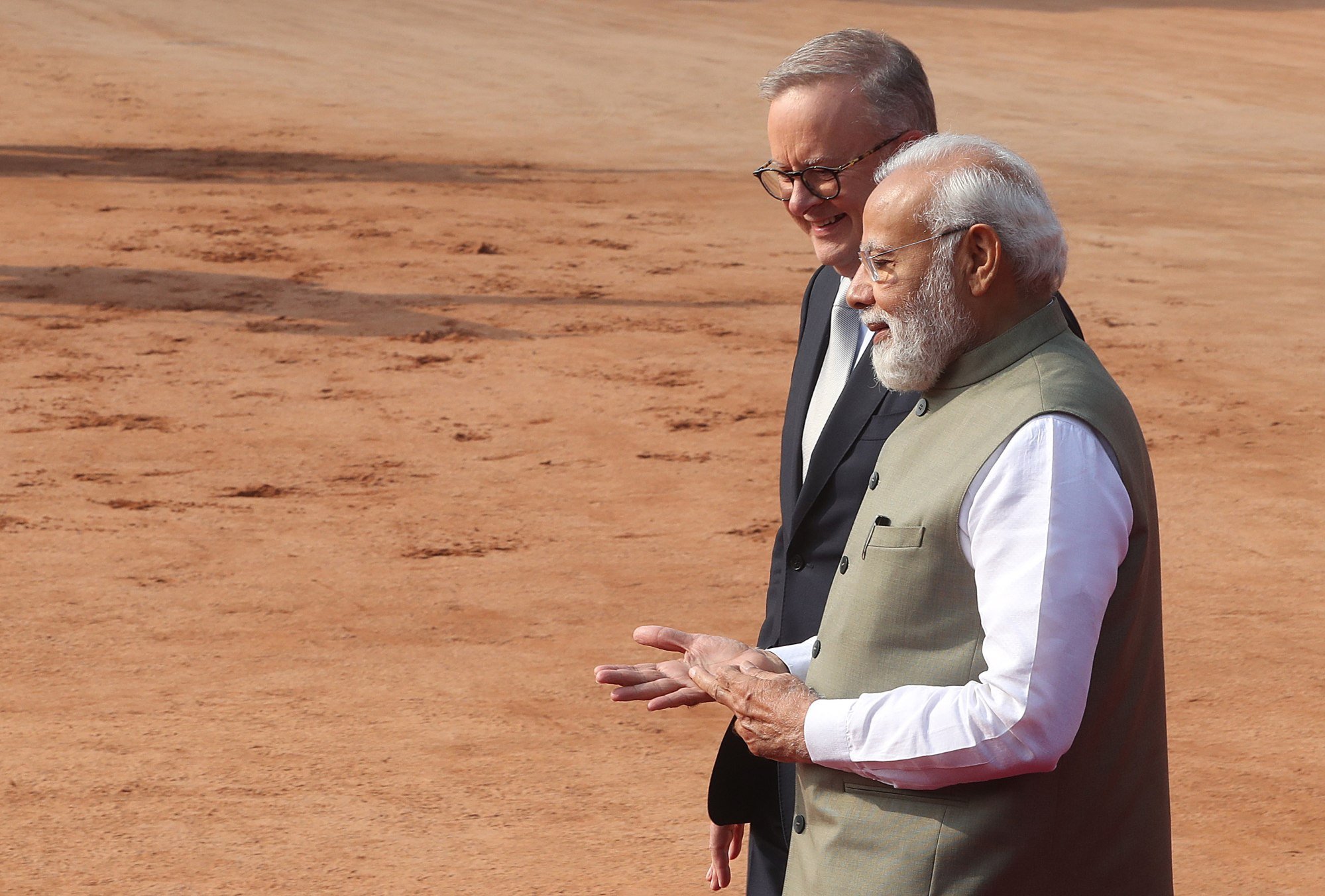
Is India ready to take China’s place in the global economy? That’s just wishful thinking
- Australia and other US allies looking for potential trade and investment partners to reduce their reliance on China are knocking on India’s door
- But India’s modest economic size, challenging investment environment and substandard infrastructure are major deterrents to fruitful collaboration
Comparing China to India is like comparing apples with oranges, with the only similarity being their billion-plus populations. The United States is encouraging its allies like Australia to bet big on India as the slow process of decoupling investments from China begins.
India has been increasingly viewed as a natural ally to countries like Australia, which see it as an economic and military counterweight to China. They believe the best way for this to happen is through foreign direct investment into the country, to allow for a gradual transition of enterprises from China to India.

Such actions have seen India’s FDI inflows, as a share of the global total, fall from 3.4 per cent to 2.8 per cent between 2019 and 2021, whereas China’s share has have risen from 14.5 per cent to 20.3 per cent. In recent years, companies like Harley-Davidson and the Royal Bank of Scotland have either downsized or exited India, with German retailer Metro AG selling its operations after two decades in the country.
Despite India’s economic progress, poverty is still a defining feature in its sprawling metropolises. Former Reserve Bank of India governor Raghuram Rajan has also weighed in on the India-China competition, stating: “The argument that India will replace China is very premature as India is a much smaller economy as of now.”
Unfortunately, India is not currently in a place to deliver on the expectations placed on it by countries like Australia, which remain stuck in a geopolitical gambit with China. Simply banking on its large population is a fickle way of viewing the options amid a decoupling from China’s economy. India is still decades away from realising its true potential.
The two countries’ goals also differ. China is transforming itself into a technologically driven economy in order to exceed the potential of the US. In contrast, India is attempting to position itself as a market-driven economy utilising its large population as a manufacturing base to compete with China.
Australia may be merely continuing along the tried and tested path of seeking “great and powerful friends”, as it has done in the past with the UK and America, to take care of it and help protect its interests. It may see in India a stable and uncomplicated trading partner compared to China.
India ‘on cusp of change’ as global manufacturers look beyond China
However, thorough planning is required to meet the challenges and avoid the risks before conducting business in such an environment, which appears absent from current conversations. In 2021, India was Australia’s sixth-largest two-way goods and services trading partner, valued at A$34.4 billion (US$22.9 billion), and the fourth-largest goods and services export market, valued at A$19.3 billion, representing a 4.2 per cent market share of Australia’s total exports.
However, China is Australia’s largest two-way trading partner, at A$267 billion, representing 32.2 per cent of Australia’s total trade. Some A$178 billion of goods and services made it to Chinese ports in 2020-2021. Australia hopes to expand bilateral trade to A$100 billion with India.
Anyone in Canberra who sees India as a viable substitute for China is seriously out of touch, and will be putting the nation’s export industries in a precarious position with their wishful geopolitical decisions not based on the realities on the ground.
Sameed Basha is a defence and political analyst with a master’s degree in international relations from Deakin University, Australia


